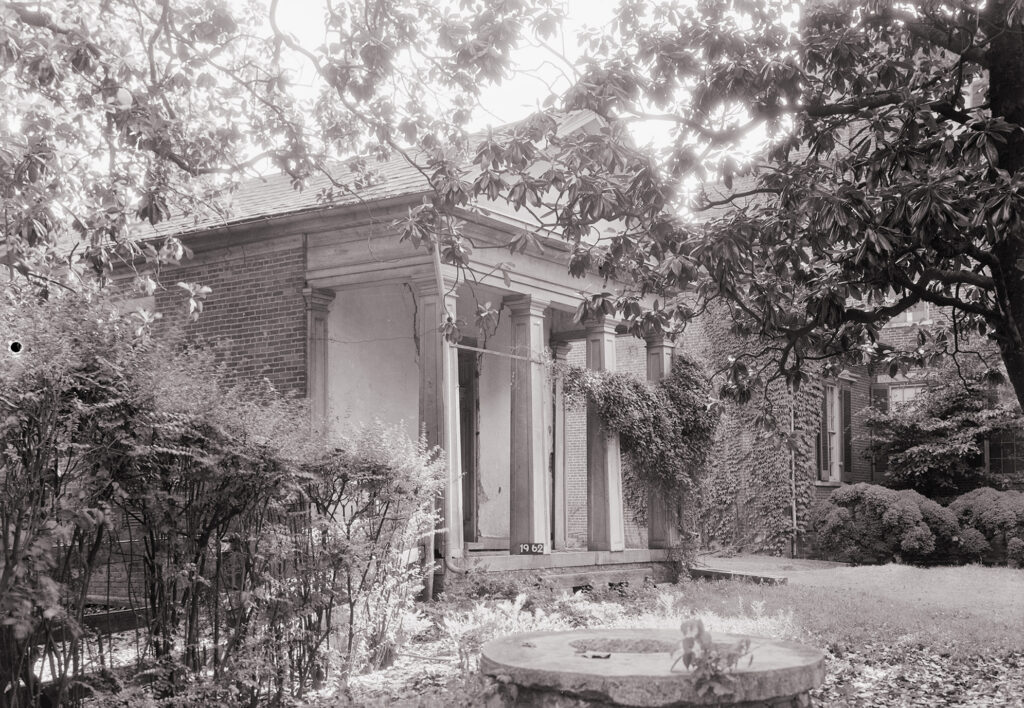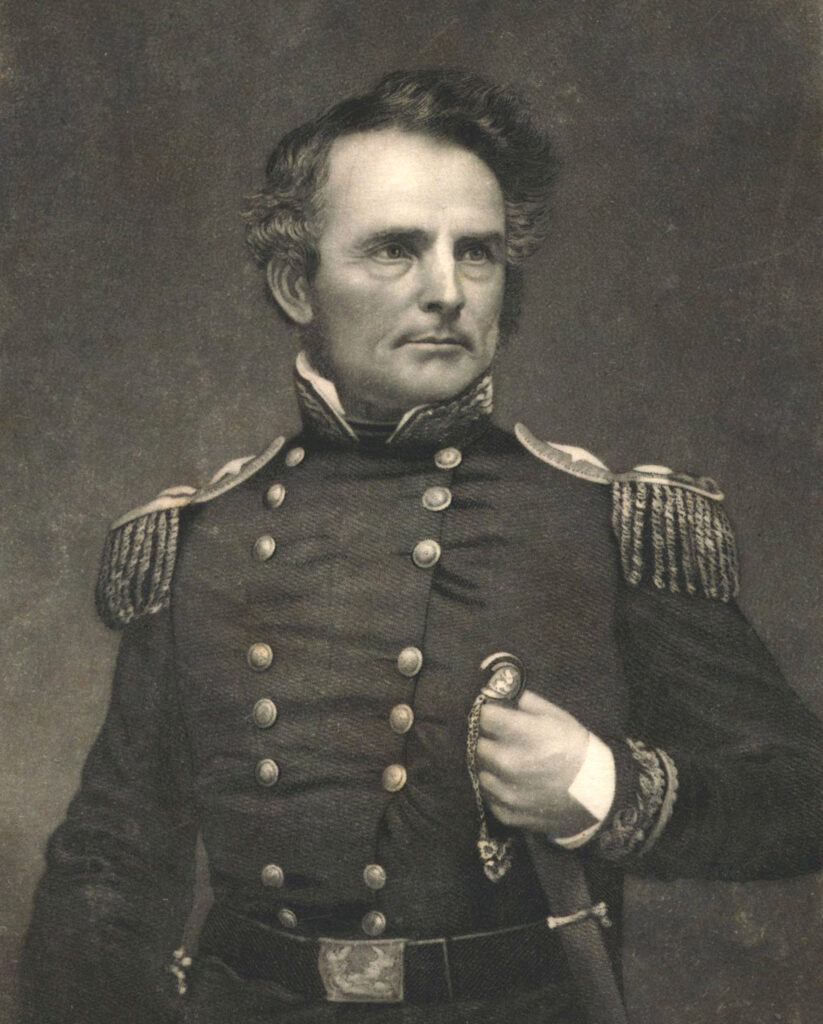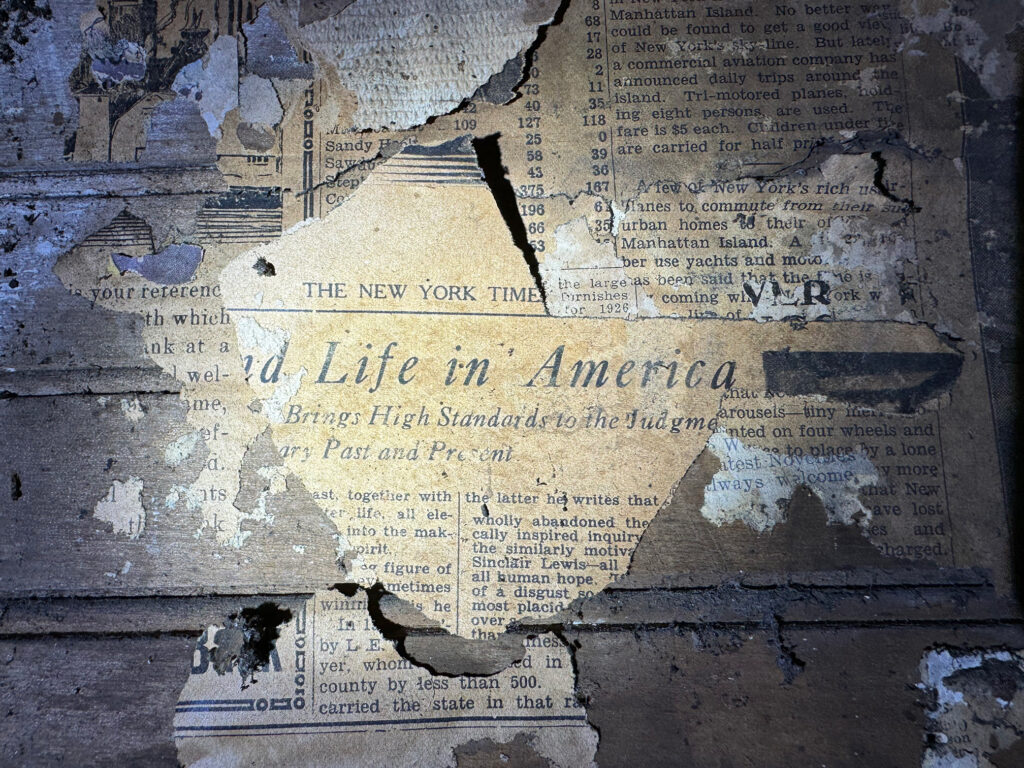On a cloudless, deep-blue sky afternoon, I drive 45 miles south of Nashville to Columbia for a visit with one of my favorite people, Campbell Ridley. He’s an 80-year-old semi-retired farmer, U.S. Army veteran, rock & roll devotee, and storyteller with a wit and sense of humor as sharp as the tip of a new bayonet.
“How are you feeling?” I ask my friend minutes after arriving at his farm office.
Aside from mourning the recent death of Barney—his nine-year-old barn cat—Ridley feels fine, a fact he attributes to “clean living and cheap beer.” He wears tan Carhartts, brown work boots, a blue-checkered shirt and, appropriately, a baseball cap with the words “Life Is Good” across the front.
Ridley’s roots run deep here in Maury County, one of the wealthiest counties in the state before the Civil War. He’s the great-great-grandnephew of Gideon Pillow, the Confederate brigadier general, Mexican War veteran, politician, lawyer and, before the war, one of the foremost slaveholders in the county. Ridley’s paternal great grandfather, who depended on mules for farming and was one of the county’s leading citizens, earned the nickname “Mule King”—Columbia, in fact, has long been touted as the “Mule Capital of the World.”
When I need my history fix and a good laugh, I visit Ridley. We’ve sat together inside magnificent St. John’s Church—a slave-constructed plantation church built under the direction of Leonidas Polk and his brothers. It stands roughly a mile and a half southwest along Mount Pleasant Pike, across the road from the mostly empty field where Polk—an Episcopalian bishop and future Confederate lieutenant general—lived in a mansion called Ashwood Hall. There, we have admired the two massive gingko trees Polk imported eons ago from Japan and have poked about what little remains of brick kitchen for the mansion, destroyed by fire in 1874 and never rebuilt.
Today, though, we will explore far more humble construction. Near Ridley’s farm office and the east fork of Greenlick Creek stand three ramshackle slave cabins. “The Quarters,” Ridley calls the property, which is owned by his daughter, who lives in New Mexico, and a friend.
“I’ll take care of this until she puts me in a nursing home,” he says, half-jokingly.
In a way, these cabins are as much a part of Ridley as the land he has farmed for decades in Columbia. As late as the 1990s, he tells me, these humble structures served as homes for poor Black farmhands and others. Many of them worked for the Ridleys.
“The woman who raised me lived here,” Ridley says as we examine one of the rickety cabins. Her name was Katie, a “wonderful” lady who had a gift for cooking fried chicken. The Ridley family employed her for more than three decades.
At another cabin yards away, ancient white paint clings to exposed exterior logs. Four modern wooden posts strain to prop up its porch overhang above two large, well-worn walkway stones. On an exterior wall, a half-dozen old hangers dangle from a rusty nail. Above us, a corrugated tin roof keeps nature at bay.
“That’s been there as long as I can remember,” Ridley says.
What a contrast these antebellum structures make with Clifton Place, the brick manor house on the hill 750 yards away. In rich late-fall sunlight, the mansion almost seems to glow. Peek through trees from the road leading to Ridley’s farm office and you’ll spot its imposing Ionic columns and impressive limestone porch.

(Library of Congress)
From 1839 until the early years of the war, when the U.S. Army confiscated the property, the mansion served as centerpiece of Clifton Place, Pillow’s plantation that encompassed hundreds of acres. His slaves—most of whom lived in cabins at “The Quarters”—generated his wealth by planting and harvesting cotton, hemp, corn, and other crops as well as tending to his cattle, sheep, and hogs.
As one of Tennessee’s leading citizens and one of the wealthiest men in the South, Pillow moved in elite social circles. He counted James K. Polk, the 11th U.S. president, among his friends. Following the end of his presidency in 1849, Polk dined at Clifton Place with Gideon and his wife, Mary. Pillow himself dabbled in national politics, opposing secession initially in 1861 before relenting.

(Tennessee State Library & Archives)
As a military man, though, political general Pillow failed to measure up. During the Mexican War, the twice-wounded Pillow angered superiors—including Winfield Scott—for his self-promotion. No surprise, perhaps, given a massive painting of a heroic Pillow in military uniform greeted visitors in the front entrance of Clifton Place.
During the Civil War, Pillow abandoned his post at Fort Donelson in February 1862, sneaking away from the beleaguered garrison under the cover of darkness before the Union Army under Ulysses S. Grant accepted the Confederates’ surrender. At the Battle of Stones River nearly 10 months later, Pillow led a brigade with mixed results. True or not, a story of the 55-year-old officer cowering behind a tree during the battle has stained his résumé ever since.
Unsurprisingly, Scott—overall commander of the U.S. Army when the Civil War broke out—did not count himself among Pillow’s fans. In his 1864 memoirs, “Old Fuss And Feathers” described Pillow as “amiable, and possessed of some acuteness, but the only person I have ever known who was wholly indifferent in the choice between truth and falsehood, honesty and dishonesty; ever as ready to attain an end by the one as the other, and habitually boastful of acts of cleverness at the total sacrifice of moral character.”
As we walk from cabin to cabin, Ridley reflects only briefly on his connection to Pillow and the slaves who toiled for him.
“Just part of history,” he says.
Ridley and I gingerly step into a cabin, home for Pillow’s field slaves. More than a year ago, he had brush and other vegetation cleared from around these remarkable survivors, giving us easy access.
Each cabin is roughly 15-by-15 feet with a small loft accessed by a rickety ladder. Each has a post-Civil War room out back. I’ve visited the site a half-dozen times but see something new each time.
Steps ahead of me, Ridley shines the narrow beam from his flashlight on a fireplace, revealing bricks and small dirt piles in an otherwise barren room. Fragments of newspaper—used as insulation by postwar inhabitants—speckle the walls. A dour-looking baseball player stares from a March 1937 newspaper sports section. A decrepit floor, victimized by time and nature, crunches beneath my feet.
In another cabin, we find more reminders of the 20th century: a swinging blade, peeling wallpaper adorned with blue- and aqua-colored floral designs, a chipped ax handle, and a barren clothes hook on a door. Pasted to the back wall is a fragment of The New York Times from decades ago.
“Life in America,” the partial headline reads.
From the era of slavery, though, we find no visible evidence they were here. No fragments of 19th-century pottery or shards of glass. No messages etched on bare, wooden walls.No privy to mine for secrets. Much is left for our imaginations.
And so, I wonder: Who were these men, women, and children?
What treatment did they receive from Pillow?
What were their names?
Perhaps the 1870 U.S. census provides us hints. “Sarah” and “Randall”—listed as farm hands for the Pillow family in that census—appear on deeds as far back as the 1840s.

living, including pottery or shards of glass, remains inside.
(Photo by John Banks)
I wonder what ultimately became of the slaves who toiled for Pillow. Were they buried in the nearby cemetery in the woods—the remote graveyard at the base of Ginger Hill that Ridley showed me months ago? Or were they buried in St. John’s Church Cemetery, far in the back, away from the final resting places of the White folks? Or perhaps they ended up in one of the scores of family cemeteries that dot the county.
And I wonder what will become of these historic treasures near the east fork of Greenlick Creek. Ridley wants to save the cabins, but that probably would cost hundreds of thousands of dollars and more expertise than he has.
What would a professional archaeologist unearth here?
I also wonder what will happen to Clifton Place, where Ridley’s paternal grandfather lived until 1949. It remained part of the Ridley family for years afterward.
“I watched television in there for the first time in my life,” Ridley says. He recalls family gatherings in the 12-room Greek Revival-style mansion and 16-foot-high ceilings.
In 1972, a Kentucky Fried Chicken magnate named John R. Neal purchased the property from the Ridley family. He and his wife, Linda, aimed to restore the mansion, but their yearslong effort proved daunting. “We saw the white columns, the Gone With The Wind atmosphere,” she told a reporter in 1986. “We didn’t see the cracks, the structural problems.”
The Clifton Place grounds include the original detached kitchen, carriage house, ice house, law office, spring house, blacksmith, and quarters for “house” slaves. In the Pillow-era smokehouse stands the original poplar chopping block and “ham logs”—hollowed out poplar logs for the salting of hams. The smoky aroma in the small brick building still tantalizes.
“The most complete 19th-century plantation complex anywhere,” a researcher once called Clifton Place.
John Neal died in 2018, but Clifton Place remains with his family. The mansion, however, has stood unoccupied (and inaccessible to the public) for more than a decade. Like the nearby slave cabins, it too could become nothing but a memory without significant preservation efforts.
Time may not be on the side of people like us who relish places like this. In an empty field across Mount Pleasant Pike from Clifton Place, developers have plans for residential housing. “750 houses on 450 acres,” Ridley says.
Oh my, what will I see here a decade from now?
John Banks is author of three Civil War books. Check out his latest, A Civil War Road Trip of a Lifetime (Gettysburg Publishing). He also can be visited on Facebook at John Banks’ Civil War blog.
This article originally appeared in the Spring 2024 issue of Civil War Times.




